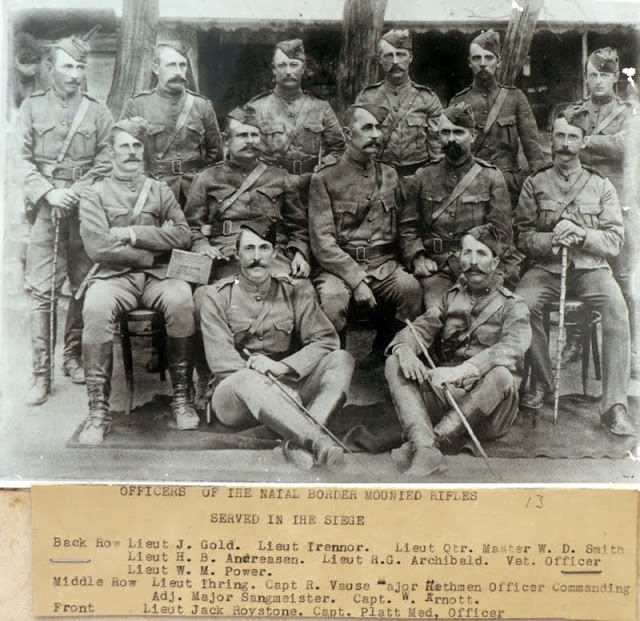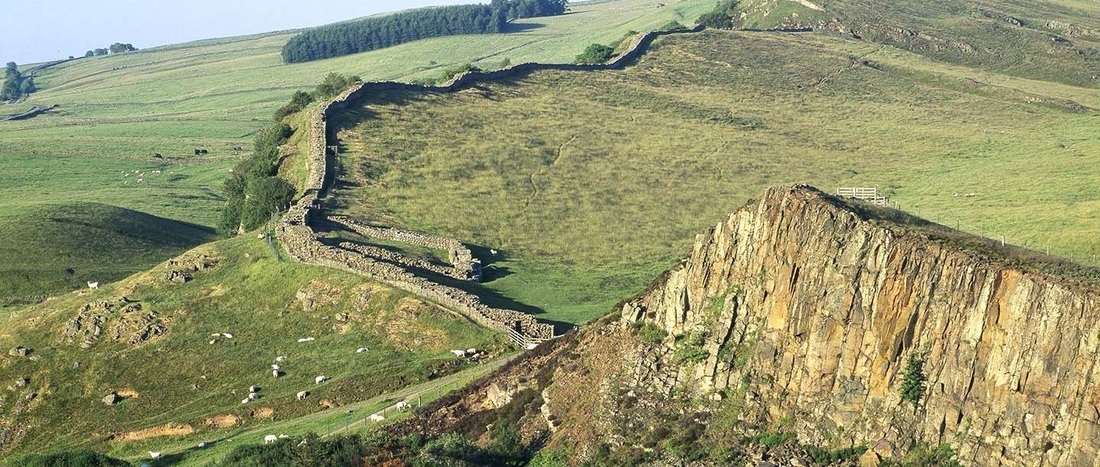Introduction
Smiths of Northumberland by Rosemary Dixon-Smith
This is an indication of how family history research can take over – and change - one’s life.
Another significant and helpful remark made in the letter was the ages of John Smith and his wife – with the address this would enable me to track them down in various Census records.
The reason for John Smith sitting down to write his letter was that he had received news of the death of his son, William Dixon Smith, during the Siege of Ladysmith. The Anglo-Boer War was still in its early stages when William, as Lieutenant Quartermaster of the Border Mounted Rifles, had fallen, not on the battlefield, but like many other soldiers, of disease in a hospital camp. William’s stepson, Alexander Anderson, a trooper in the same regiment, had also died of the fever raging through the besieged town.

To return to John’s Northumbrian origins, it seemed from Census records that he was born in Colwell. There had been Smiths at Colwell in the parish of Chollerton for so long that John (1821-1903), thought of it as his birthplace but he was actually born on 24 May 1821 at Ogle, a hamlet in Whalton parish, some miles further east, where his parents Richard and Elizabeth Smith were then living. Colwell, however, was the family base and had been as far back as anyone could remember - or even before then, from the early days of the mad old king, George III, whose reign had begun in 1760.
Traditionally, in and around Colwell, there were Smiths who were farmers and Smiths who were weavers. Northumberland was sheep-farming country. Richard Smith (William Dixon Smith’s grandfather), born on 28 October 1781, was the son of another John Smith, recorded on the occasion of Richard’s baptism as ‘weaver, at Colwell’.
Earlier, in 1762, a John Smith appears on the Militia List for Chollerton parish as ‘webster at Swinburn, Colwell’. All able-bodied men from 18 to 50 in that parish are listed, so this John could have been Richard’s father or grandfather. With the name John Smith it is very difficult to be as accurate as any researcher would wish, and a certain amount of speculation enters the story when going back to John Smith’s parents and grandparents. All that can be said with any degree of certainty is that there were numerous Smith families in Colwell from at least the mid-18th century.
The Militia List is a reminder that the Seven Years War was in progress. Britain had been almost continuously at war since 1689: the Nine Years War which had began during King William III’s reign being followed by the wars of the Spanish Succession, then by the wars of the Austrian Succession and those by seven more years of war against France. War was a fact of life.
This was not a popular move and the introduction of the ballot was vigorously opposed. So strong was local feeling that it led to a riot at the market-town of Hexham in 1761. The Gentleman’s Magazine of February 1819, discussing the history of Northumberland, mentioned the tragic event:
At Hexham, March 9 1761, a large concourse of people assembled to oppose the ballot for the Militia, when Ensign Hart, and a private of the North Yorkshire Militia being killed, the Magistrates ordered the soldiers to fire, by which 45 of the rioters were slain and 300 wounded.
It’s impossible to state with any certainty that it was John the webster (i.e. the father or grandfather of the Richard Smith baptised in 1781) who appeared on the Militia List of 1762. It is likely that this was so, and that he may have participated in or been a spectator of the riot in the previous year.
The unrest in Hexhamshire was long over by the time Richard Smith was born to John and his wife in 1781. He had at least two older brothers, Thomas, born in 1771, another John, born in 1776, as well as a sister, Mary, born in 1773. A younger brother, George, arrived in 1785. Richard and his siblings were all baptised at the Presbyterian chapel at Bavington, not far from Colwell.[i] This indicates Nonconformist views in the Smith family though it may have been the influence of the children’s mother, whose name is not recorded in the Bavington registers. Looking at Richard’s brief entry one might imagine that John had produced a son without any assistance from a member of the opposite sex:
Richard Smith son to John Smith weaver was born at Colwell. Ocbr. 28 – 1781
Traversed by Hadrian’s Wall, the area resonates with echoes of Roman Britain. The old Roman Road, Watling Street, passes between Colwell and Great Swinburn where there was a Roman camp. Later the railway would bisect the area in much the same way, through Chollerton, Barrasford and other stations.
| Many thanks to Rosemary for sharing the story of her Smith Ancestors from Northumberland. I am sure she will be looking forward to your comments, and if ever you need help tracing ancestors in South Africa I can thoroughly recommend her services! You can read more about Rosemary at: https://www.blogger.com/profile/09761273493116575841 and her ancestral journeyings at http://molegenealogy.blogspot.co.uk/ Twitter twitter.com/dixiemole |





 RSS Feed
RSS Feed
